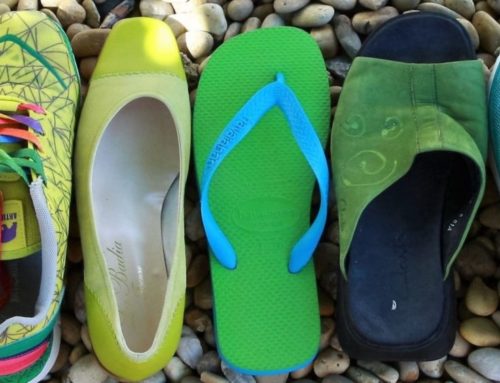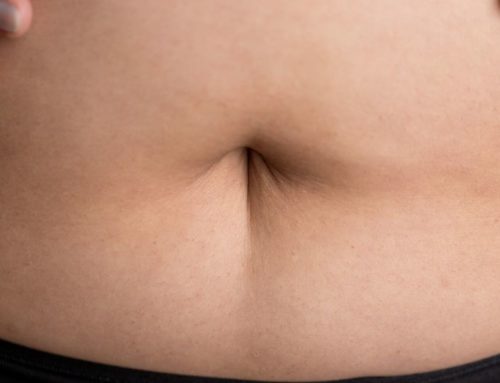What’s the owner of a wellness studio to do when an airborne virus turns into a pandemic? I’ve asked myself this question sooo many times, read through hundreds of research papers and articles, then sat down and crunched some serious math. I thought I’d share the evolution of my ventilation upgrades in the hopes that it is helpful for others trying to make sense of how to make indoor spaces safer.
Ventilation Matters
SARS-CoV-2 (COVID-19) travels with person-to-person contact and has been well-documented that microdroplet and aerosol transmission firmly puts this virus into the airborne category (1, 2, 3, 4, 5, 6). And while 2- and 3-ply masks do a good job of helping to reduce the amount of microdroplets and aerosolized secretions that make it into our breathing space (5, 7), but we don’t consider them to be a standalone too (hence the social distancing guidelines). Considering estimates say 40% of persons with COVID-19 present with no symptoms (8), it’s easy for me to see why ventilation needs to be an absolute priority for every indoor space right now.
In the New York Times article based on the Florida research that found virus in the air 7 and 16 feet away from COVID-19 patients in a local hospital (6), Several experts noted that the distance at which the team found virus is much farther than the six feet recommended for physical distancing. “We know that indoors, those distance rules don’t matter anymore,” Dr. Schofield said. It takes about five minutes for small aerosols to traverse the room even in still air, she added.”
Determining Ventilation Needs
First, I would need a few details about my room to determine my needs. I started with a tape measure, and three very helpful cats to determine the square footage of the studio: 18′ (width) x 20′ (length) = 360 square feet. To determine the breathable space in the studio an additional number gets thrown in: ceiling height. So 18′ x 20′ x 8′ = 2,880 cubic feet of air to ventilate.
This information helped me initially determine the size of air purifier I would need to purchase. I started out with the Blue Pure 211+ by Blueair as it was rated for five air changes an hour in a 540 square foot room.
After a while I wondered if five air changes an hour was enough for an airborne virus? An online search brought me to the CDC’s Ventilation Specifications for Health-Care Facilities, which is based on the American Institute of Architects’ Guidelines for Design and Construction of Hospitals and Health-Care Facilities, 2001. Having worked in the construction industry prior to going into the healing arts this felt like a good way to understand how buildings and HVAC systems are designed for healthcare facilities. The guidelines account for factors like air movement, air changes of outdoor air, and total air changes in a variety of spaces from emergency room waiting areas, to the OR, and even labor and delivery wards.
Drawing on my memories of helping determine HVAC needs for remodels and new construction I quickly realized more math would be needed here. Ha! Fortunately for someone like me with synesthesia around numbers, there’s a handy website calculator that helped determine how many air changes per hour (ACH) I could expect after purchasing a larger air purifier.
Air Cleaners
Note that this portion of the article includes affiliate links for products I am currently using in my practice. If you click a link for a tool and make a purchase, I will earn a commission at no extra cost to you. My recommendations are based on my experience with and knowledge of the products, and I recommend them because they’ve been important tools in my practice.
As of October 2022 I am using the following air cleaners in the studio.
 Taotronic AP003 HEPA Air Cleaner (affiliate link)
Taotronic AP003 HEPA Air Cleaner (affiliate link)
This unit has three fan speeds that have been verified by the Association of Home Appliance Manufacturers (AHAM) to remove smoke in a room at the following clean air delivery rates (CADR):
- Speed 1: 87 cfm / 183 m3h / 41 liters per second
- Speed 2: 121 cfm / 205 m3h / 57 liters per second
- Speed 3: 208 cfm / 353 m3h / 98 liters per second
At 52 decibels on high (speed 3) it is a comfortable unit to have running during a treatment or class as a white noise fan in the background.
 Levoit Core 400S Smart HEPA Air Cleaner (affiliate link)
Levoit Core 400S Smart HEPA Air Cleaner (affiliate link)
This unit has five fan speed settings to choose from and can be connected to your WiFi to setup a schedule – I use the scheduling feature to run the unit on turbo speed at the beginning and end of the day. Clean air delivery rates for the different speeds are as follows:
- Sleep: 52 cfm / 88 m3h / 25 liters per second
- Low: 83 cfm / 141 m3h / 39 liters per second
- Medium: 116 cfm / 197 m3h / 55 liters per second
- High: 166 cfm / 282 m3h / 78 liters per second
- Turbo: 244 cfm / 415 m3h / 115 liters per second
This is the unit I schlep to the behavioral hospital every week for aromatherapy group as I can run it off my portable battery bank on Turbo speed. I either use a HomeGoods reusable shopping bag or a luggage hand cart to bring it to group with me, setup, plugin, and it can handle the larger group sizes that the Taotronics can’t.
 DIY Corsi-Rosenthal Box (informational link)
DIY Corsi-Rosenthal Box (informational link)
This air cleaner is a 20″ box fan with four 20x25x2 furnace filters taped into a box, then I added a green palm vinyl wallpaper to the outside. CR boxes are being utilized in doctor’s offices, classrooms, and businesses across the country to clean a large volume of air that’s a bit easier on the budget. It’s a little harder to estimate the clean air delivery rate as I went with a larger size furnace filter but it should be in the ballpark of 330-350 cfm on low, 430-450 cfm on medium, and 460-500 cfm on high.
When it’s just me and one client I run the Taotronics on speed 3, the Levoit on speed four (high), and the CR box on low to get an approximate clean air delivery rate of 704 cubic feet per minute which cleans the room at more than 14 times an hour.
During classes when I have students I can have 882-912 cubic feet per minute which is closer to 19 air changes per hour but a bit noisy. Though, when we’ve got a full class we’re all a bit noisy on our own anyway so we don’t mind so much.
For ventilation I am using PolenRelief’s Activated Carbon Passive Window Air Purifier in one window and a Vornado Transom Fan (affiliate link) in the opposite window on exhaust mode. On exhaust the fan can pull 88 cfm on low, 139 cfm on medium, and 162 cfm on high giving me another few air changes per hour of fresh air ventilation.
Cleaning the Air Before and After Clients
The chart for Airborne Contaminant Removal shows an ACH of 20 will need 14 minutes for 99% removal of contaminants and 21 minutes for 99.9% removal. This guide is of particular help to know how long I need to budget to have the room empty on either side of an appointment so the air can be well cleaned. If my ACH gets smaller, I’ll need to budget longer for ventilation.
In Closing

Overall this exercise in math, measuring with cats, and pouring through the available literature leaves me feeling quite pleased with my efforts. My ACH exceeds the CDC guidelines for ER waiting rooms, but it’s not anywhere near a negative pressure room like you’d expect in an isolation room in the ICU.
Other preventative measures I have in place to make in-person appointments and practicums safer, include:
- Mask wearing for myself and clients/students;
- Using the list of EPA disinfectants approved for SARS-CoV-2 and ensuring they get proper dwell time to do their work on contact surfaces, equipment, flooring, and the bathroom;
- Small social bubble, in keeping with multiple government guidelines;
- Keeping healthy by keeping a daily temperature log, restricting outings to essential errands and outdoor recreation, and wearing a face mask in public.
The adjustment period for us all has made 2020 particularly stressful but I feel confidant that steps like improving ventilation will go a long ways to making it safer for me to continue seeing folks in person and folks to continue their studies and/or receive wellness services.
References for this article:
- Sundell, Jan, et al. “Ventilation rates and health: multidisciplinary review of the scientific literature.” Indoor air 21.3 (2011): 191-204.
- New study explores how coronavirus travels indoors, University of Minnesota, 7/28/20
- We Need to Talk About Ventilation, The Atlantic, 7/30/20
- Small droplet aerosols in poorly ventilated spaces and SARS-CoV-2 transmission, The Lancet: Respiratory Medicine, 5/27/20
- Open windows while using air conditioning, experts say as WHO shifts stance on airborne coronavirus, The Telegraph, 7/11/20
- Reducing transmission of SARS-CoV-2, Science, 6/26/20
- ‘A Smoking Gun’: Infectious Coronavirus Retrieved From Hospital Air, New York Times, 8/11/20
- Still Confused About Masks? Here’s the Science Behind How Face Masks Prevent Coronavirus, University of California San Francisco, 6/26/20
- 40% of People With COVID-19 Show No Symptoms, The CDC Estimates, Science Alert, 7/13/20









What do you think of air doctor?
This is a great resource on how to sift through marketing language and avoid hazardous add-ons: https://cleanaircrew.org/air-cleaners/. And this one will help you sort out which unit(s) will be appropriate for the size of the room you’ll be using them in and how much your annual costing will be: https://cleanairstars.com/filters.